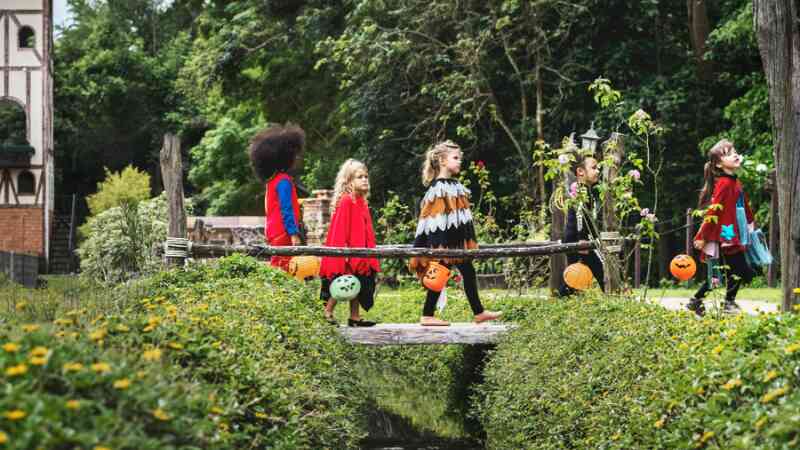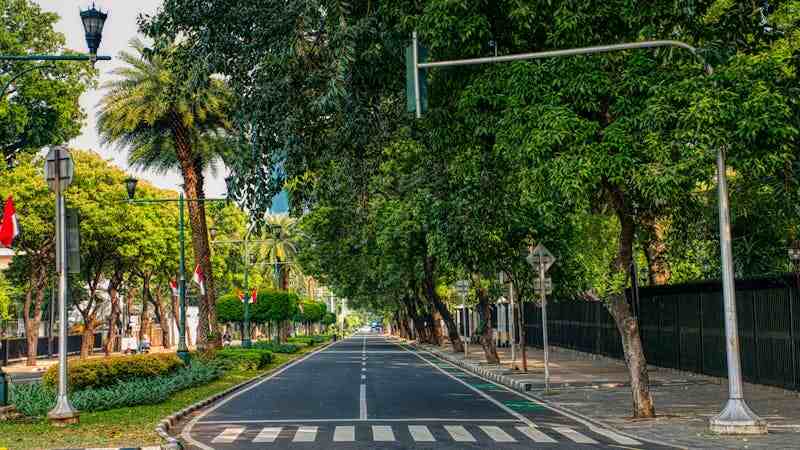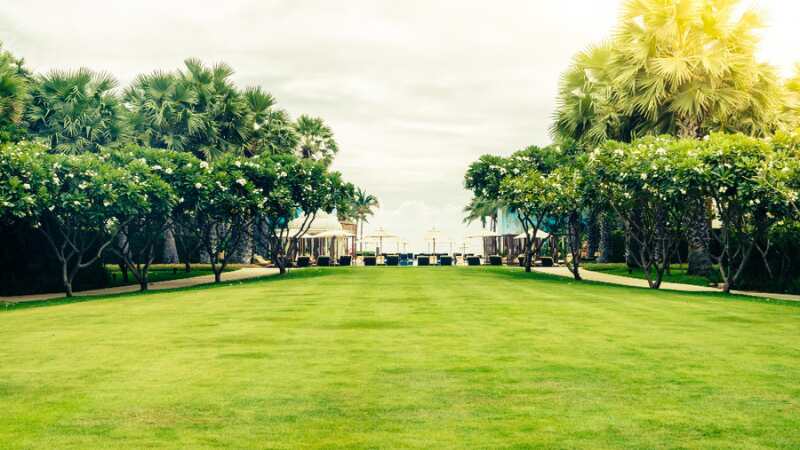Green spaces are becoming increasingly important in modern life. Whether it’s a local park, a community garden, or even the greenery you find on a walk in the countryside, these areas significantly benefit individuals and communities. In addition to their aesthetic appeal, green spaces promote well-being in countless ways. But what are the real benefits of green spaces, and how do they affect our daily lives? In this article, we’ll explore the top five benefits of green spaces, diving deeper into why these natural environments are more important than ever.
Introduction
Importance of green spaces: Green spaces promote environmental and human well-being. They improve air quality by absorbing pollutants and releasing oxygen, making urban environments healthier. These areas provide a natural environment for physical activity, which reduces the risk of lifestyle-related diseases while also reducing stress levels. Socially, parks and gardens serve as community hubs, fostering social interaction and a sense of belonging.

They also help mitigate the effects of climate change by cooling cities and providing habitats for wildlife. Green spaces boost property values and create economic opportunities through tourism and recreation. In essence, they are the lungs and heart of urban life, essential to sustainable, healthy communities. Where nature meets well-being for a brighter, healthier future.
Overview of key benefits: The main benefits of green places are wide-ranging and impactful. They improve air quality by absorbing pollutants and releasing oxygen, creating a healthy urban environment. Greenery promote physical activity, which can reduce the risk of chronic diseases and increase overall health. They help reduce stress, anxiety and mental fatigue by providing a peaceful, natural escape from busy urban life.
Socially, these areas promote community interaction and strengthen social ties. Green places also help combat climate change by cooling cities and supporting biodiversity. Additionally, they boost property values and contribute to local economies through tourism and recreational activities.
Frequently Asked Questions
Questions 1: How do green spaces affect mental health?
FAQ 2: Can green spaces reduce pollution?
FAQ 3: What kind of physical activities can you do in green spaces?
FAQ 4: How do green spaces help build community?
FAQ 5: Do green spaces help the local economy?
Introduction
In a world that is becoming more urban by the minute, green spaces act as a breath of fresh air. These patches of nature provide more than just a scenic view. They are essential for raising the quality of life for individuals and communities alike. From promoting mental well-being to boosting the economy, the benefits of these greenery are manifold. Whether you live in a bustling city or a quiet suburb, the presence of trees, plants and open natural areas has a clear impact on everyday life. Let’s look at five major benefits of green spaces and why we should prioritize their creation and preservation.
H1: Green Spaces for Better mental health
Where do you go when you’re feeling stressed or overwhelmed? For many, the answer lies in nature. Several studies show that green places can have a positive effect on mental health. But how does spending time in nature help with mental health?
Green spaces significantly improve mental health by providing a calm and natural environment that reduces stress and anxiety. Exposure to nature has been shown to reduce levels of cortisol, a hormone linked to stress. Spending time outdoors in parks or gardens can improve mood, increase focus, and increase feelings of well-being.

These spaces also promote mindfulness and relaxation, offering a much-needed break from the hustle and bustle of urban life. For people dealing with mental health issues such as depression, access to greenery can offer therapeutic benefits and speedy recovery. In short, these places act as natural stress relievers for the mind.
H2: Green Spaces Reduce stress
Ever noticed that a short walk in the park can make you feel calmer and more relaxed? This is not a mere coincidence. it has been proven to reduce cortisol levels (the stress hormone). The tranquility offered by greenery, the rustling of leaves, and the peaceful atmosphere all help reduce stress and make individuals feel more centered.
H2: Enhancing cognitive function with green spaces
Surprisingly, time spent in nature doesn’t just clear your head, it sharpens it. Research has shown that exposure to green spaces can improve cognitive function. Whether you’re studying, working or just solving everyday problems, taking breaks in natural settings can help you focus better and think more clearly.
H3: How Greenery reduces anxiety and depression.
Greenery have been found to relieve symptoms of anxiety and depression. Nature provides a much-needed escape from the hustle and bustle of urban life, offering a serenity that is hard to find elsewhere. For individuals dealing with mental health challenges, green spaces can act as natural therapy, encouraging mindfulness and reducing negative thought patterns.
H1: Physical health benefits

Green spaces aren’t just good for the mind – they’re great for the body too! Physical activity is often easier and more enjoyable when done in a natural environment.
H2: To encourage an active lifestyle
How many times have you found yourself sitting indoors, glued to the screen? Green Places encourage people to get outside and move. Whether it is walking, jogging, cycling or playing sports, these activities become more attractive when they take place in a green environment. People are more likely to engage in physical activity when they have easy access to parks and recreation.
H2: Green spaces as a natural gym.
For those who might not enjoy going to the gym, green spaces offer a great alternative. Open fields, walking paths, and playgrounds provide an environment for outdoor exercises like yoga, bodyweight training, and more. Not to mention, the fresh air and scenery make working out less of a chore and more of a refreshing experience.
H3: Improving cardiovascular health
Spending time in greenery is also linked to improved heart health. Regular physical activity in nature helps lower blood pressure, reduce the risk of heart disease and increase overall cardiovascular endurance. Even low-intensity activities like walking or hiking in green areas can do your heart a lot of good.
H1: Increases social interaction.

Green spaces serve as community hubs where people of all ages can gather, promoting social interaction and improving community relationships.
H2: Building community connections
Local parks and public gardens often serve as places where people gather for activities, events, or simply to relax. These settings provide opportunities for individuals to interact, form friendships, and feel a greater sense of belonging in their communities.
H2: Reducing social isolation through public green areas
In today’s digital age, many people face social isolation, which can negatively affect mental and physical health. Greenery act as a therapy, encouraging people to get out of their homes and engage with others in a shared environment. Whether through organized events or spontaneous conversations, these spaces can significantly reduce loneliness.
H3: Green spaces promote social equity.
Everyone may access these places, regardless of their financial situation.They provide an inclusive environment where people from different walks of life can come together and enjoy nature. This equality in access helps promote a sense of justice and belonging among diverse groups of people.
H1: Environmental benefits

Natural areas not only benefit individuals but also play an important role in protecting and improving the environment. they provides human oxygen and food to animals and insects Green environmets are neccesary for every living being to connect them with nature.
H2: Improving air quality
Plants are natural air purifiers. Trees and shrubs in green spaces absorb pollutants, filter harmful particles, and release oxygen into the air, thereby improving air quality. In urban areas, where pollution levels are often high, the presence of green spaces is essential to ensure clean air for residents.
H2: Effects of natural cooling in urban areas
Green Places are often called the “lungs” of cities, and for good reason. They help reduce the urban heat island effect, where concrete and infrastructure make cities significantly warmer than the surrounding countryside. The shade provided by trees, along with the cooling effect of grass and vegetation, helps regulate temperatures in cities, making them more comfortable for residents.
H3: Supporting biodiversity
Greenery are vital habitats for many different kinds of plants and animals. These areas support biodiversity by offering food, shelter and protection for birds, insects and other wildlife. Maintaining and expanding green spaces helps ensure that urbanization does not completely destroy local ecosystems.
H1: Economic benefits

It may surprise you, but green spaces can also offer significant economic benefits to both individuals and communities.
H2: Increase in property value
Homes and businesses located near green spaces have higher property values. People are willing to pay more for a home with access to parks and gardens, recognizing the health and lifestyle benefits from these areas. As a result, investing in green spaces can increase the economic value of a neighborhood or community. is
H2: Green spaces boost local economies.
Parks, gardens and other green areas attract visitors and tourists, providing opportunities for local businesses to flourish. From cafes near parks to outdoor recreation facilities, green spaces drive foot traffic and create jobs, thereby stimulating the local economy.
H3: Cost savings on health and energy
Finally, green spaces can lead to long-term cost savings for both individuals and governments. By encouraging healthy lifestyles and reducing the burden of diseases related to inactivity and poor air quality, they can reduce health care costs. Additionally, the natural cooling effect of green areas can reduce energy consumption, reducing air conditioning costs, especially in urban areas.
How does green space affect mental health?
Green spaces help reduce stress, reduce anxiety and improve overall mental well-being. The natural environment promotes relaxation and mindfulness, offering an escape from the fast-paced urban lifestyle. Spending time in green spaces has been shown to lower cortisol levels, the hormone responsible for stress, and can even help reduce symptoms of depression.
2. Can green spaces reduce pollution?
Yes, Natural areas play an important role in reducing pollution. Trees, shrubs and plants absorb harmful pollutants such as nitrogen dioxide and particulates from the air, improving air quality. They also produce oxygen, which helps balance carbon dioxide levels in urban areas, contributing to a healthy environment.
3. What kinds of physical activities can you do in green spaces?
There are a number of physical activities that can be enjoyed in green spaces, including walking, jogging, cycling, yoga, and outdoor sports such as soccer, basketball, or tennis. Green spaces provide an ideal environment for low-impact activities such as tai chi, stretching, or simply walking your dog.
4. How do green spaces help build community?
Green spaces act as community hubs, where people of all ages can come together. Whether it’s through organized activities, events, or informal gatherings, green spaces promote social interaction and foster strong community bonds. They encourage a sense of belonging and help reduce social isolation.
5. Do green spaces help the local economy?
Of course! Green places can increase property values in nearby areas, attract tourists and boost local businesses. Parks, botanical gardens, and recreation areas often bring in foot traffic, which supports cafes, restaurants, and other nearby establishments. Additionally, green spaces create jobs, especially in landscaping, maintenance, and tourism-related sectors.
Enhancing the overall quality of life
Incorporating greenery into urban and suburban environments goes beyond aesthetics. It changes the whole experience of living in these spaces. Whether it’s the quiet rustling of leaves on a breezy afternoon or the sight of blooming flowers after a long winter, greenery connects us to the cycles of nature. They remind us of our roots and provide a peaceful haven where we can recharge and reflect. This connection to nature offers a balance that can be hard to find in the busy rhythm of modern life.
Reducing noise pollution
An often overlooked benefit of green places is their ability to reduce noise pollution. Trees and plants act as natural sound barriers, absorbing and deflecting noise from traffic, construction and other urban activities. This can be especially valuable in cities where noise pollution is not only annoying but also causes stress and sleep disturbances. Having a park or green buffer zone between residential areas and busy streets can create a quieter, more peaceful environment for residents.
Promoting educational opportunities
Green Places can also serve as outdoor classrooms. Schools, universities, and community groups often use parks and botanical gardens for environmental education programs. These programs teach people about ecology, sustainability and conservation, fostering a deeper appreciation for nature. For children, green spaces offer an interactive and hands-on way to learn about the natural world, cultivating a generation that is more aware of environmental issues.
Effects of rehabilitation on hospitalized patients
Another interesting aspect of greenery is their effect on healing and rehabilitation. Studies show that hospital patients who have access to green spaces, or even views of nature from their windows, recover faster and report less pain than those who do not. Those who do not The calming effect of nature helps reduce stress, which can be important during recovery. Hospitals and healthcare centers are now designing their spaces with gardens and greenery to promote a healing environment.
Mitigation of climate change
Apart from the environmental benefits we mentioned earlier, green spaces also play a role in combating climate change. By absorbing carbon dioxide, trees and plants help reduce greenhouse gas levels, making green spaces an important part of the fight against global warming. Furthermore, by supporting biodiversity and providing habitats for different species, green spaces contribute to ecosystem resilience, which is important as climate patterns change.
Growing need for greenery in the future
As the urban population continues to grow, the pressure on land resources increases. Cities are expanding, and landscapes are shrinking. In this context, the creation and preservation of green spaces becomes even more important. Urban planners and governments must recognize the long-term benefits of green spaces and integrate them into city design to ensure sustainable development. The value of these areas extends far beyond their immediate aesthetic appeal – they are an investment in the health, happiness and prosperity of future generations.
There is also an emerging trend of vertical and green roofs, especially in densely populated cities where horizontal space is limited. These innovations maximize greenness in the urban environment by incorporating plants into building design. Not only do they improve air quality and provide a cooling effect, they also make the urban landscape more attractive.
Conclusion Green spaces are not just patches of land with trees and grass. They are essential for the well-being of individuals and societies at large. From mental health to environmental sustainability, from fostering community bonds to boosting the local economy, They offer many benefits that cannot be ignored. As urbanization continues to expand, the importance of protecting and creating new green spaces will only increase.

The next time you walk through a park or pass a community garden, take a moment to appreciate the important role these green spaces play in our lives. They’re more than just places to relax—they’re the key to a healthier, happier, and more sustainable life.
they aren’t just an optional luxury – they’re a necessity for healthy, vibrant communities. They offer a wide range of benefits, from improving mental and physical health to promoting social interactions and supporting environmental sustainability. As cities grow and urban areas expand, the need for accessible green spaces becomes even more important. Whether you’re taking a walk in your local park or advocating for more green spaces in your city, remember that these spaces are critical to creating healthier, happier and more connected communities


